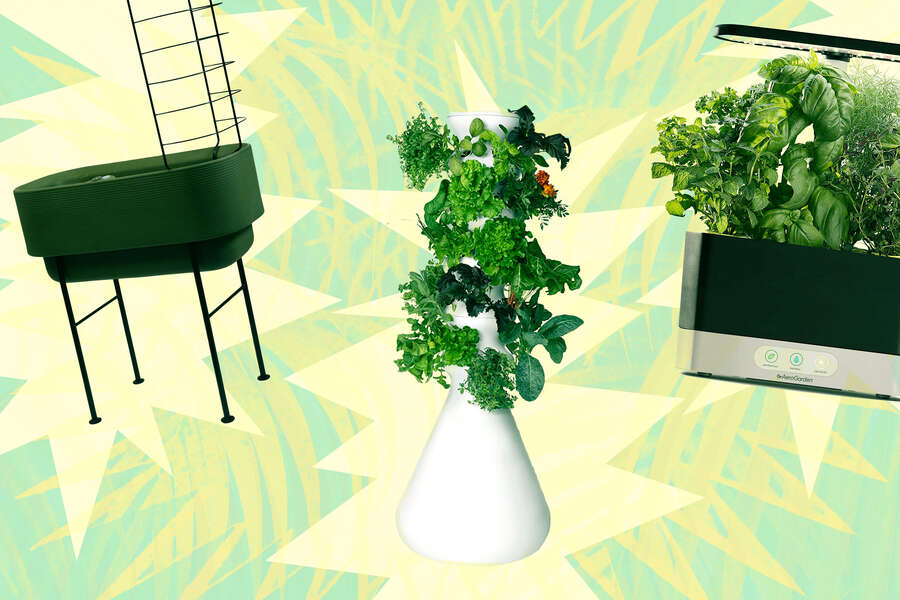
We independently source all of the awesome products and experiences that we feature on Thrillist. If you buy or book from the links on our site, we may receive an affiliate commission — which in turn supports our work.
City dwellers and suburbanites alike have often romanticized the idea of farming. Waking up at the crack of dawn, feeding livestock, tending to the land. The fantasy of working for yourself while making an honest living is, admittedly, idyllic. However, if you've ever been to a farm, taken in the pungent aromas of the barn, and hauled bales of hay for a few hours, you'd be begging to leave by nightfall. Lucky for you technology has come a long way, and you can easily start a farm on your kitchen counter with just an outlet, some water, seeds, and a bit of patience.
But when it comes to indoor growing, where do you begin? What should you look for in a grow kit? What kinds of vegetables and/or herbs grow best? To find out, we talked to Joyce Mast—aka the Plant Mom—at Bloomscape. She helped us break it down into three categories that we'll call beginner, intermediate, and advanced. That said, you don't have to be an expert tiller or farming fanatic to be "advanced." Maybe you just have a lot of space, time, and passion for growing. Wherever you think you land on the sowing spectrum, we've got a great indoor garden for you. No plowing, baling, or manure duty required.
Beginner
You want to grow herbs or veggies, but you've never grown anything in your life. Here's where to start.These are the entry-level grow kits for the total novice. They require minimal effort to maintain, are small enough to fit on your kitchen counter, and will always be a great conversation starter. Joyce recommends an herb collection and breaks them down into three categories: Aromatic herbs (sage, rosemary and thyme), savory herbs (basil, oregano and parsley), and spicy herbs (cilantro, arugula and oregano). But ultimately, the choice is yours.
Intermediate
You know your way around soil and which windows to put plants in. You've possibly even dabbled in growing peppers or herbs before. These kits are more your speed.The growing kits here require some knowledge of plants as well as more attention. They'll give you the option to grow more, but they're also a bit bigger and might need their own dedicated spot in your home. Joyce explains that you'll have to consider the needs for the herb or vegetable you’re growing so that you’re trimming to continuously encourage growth—as well as your needs for cooking with the herb or veggie.
Advanced
You've done this before. You already have a garden, but are really attracted to the idea of having another garden in your home. Check out these kits.The few growing kits here are for the more experienced gardeners who have the space, time, and patience to nurture the smallest seedlings into the biggest bounty. With these type of gardens, Joyce says "...know the needs for the herbs or vegetables you’re growing, so that you’re trimming to continuously to encourage growth." She also notes a detail many new growers overlook: "You may not be the only one in your household who enjoys eating herbs and vegetables. Aphids, spider mites, and whiteflies are all pests that can take residence in your indoor garden." You'll need to be sure to monitor these gardens daily.
February 23, 2021 at 04:26AM
https://ift.tt/37BORio
How to Easily Grow Flourishing Veggies & Herbs Indoors, According to a Pro - Thrillist
https://ift.tt/3eCf9lu
Herb
No comments:
Post a Comment